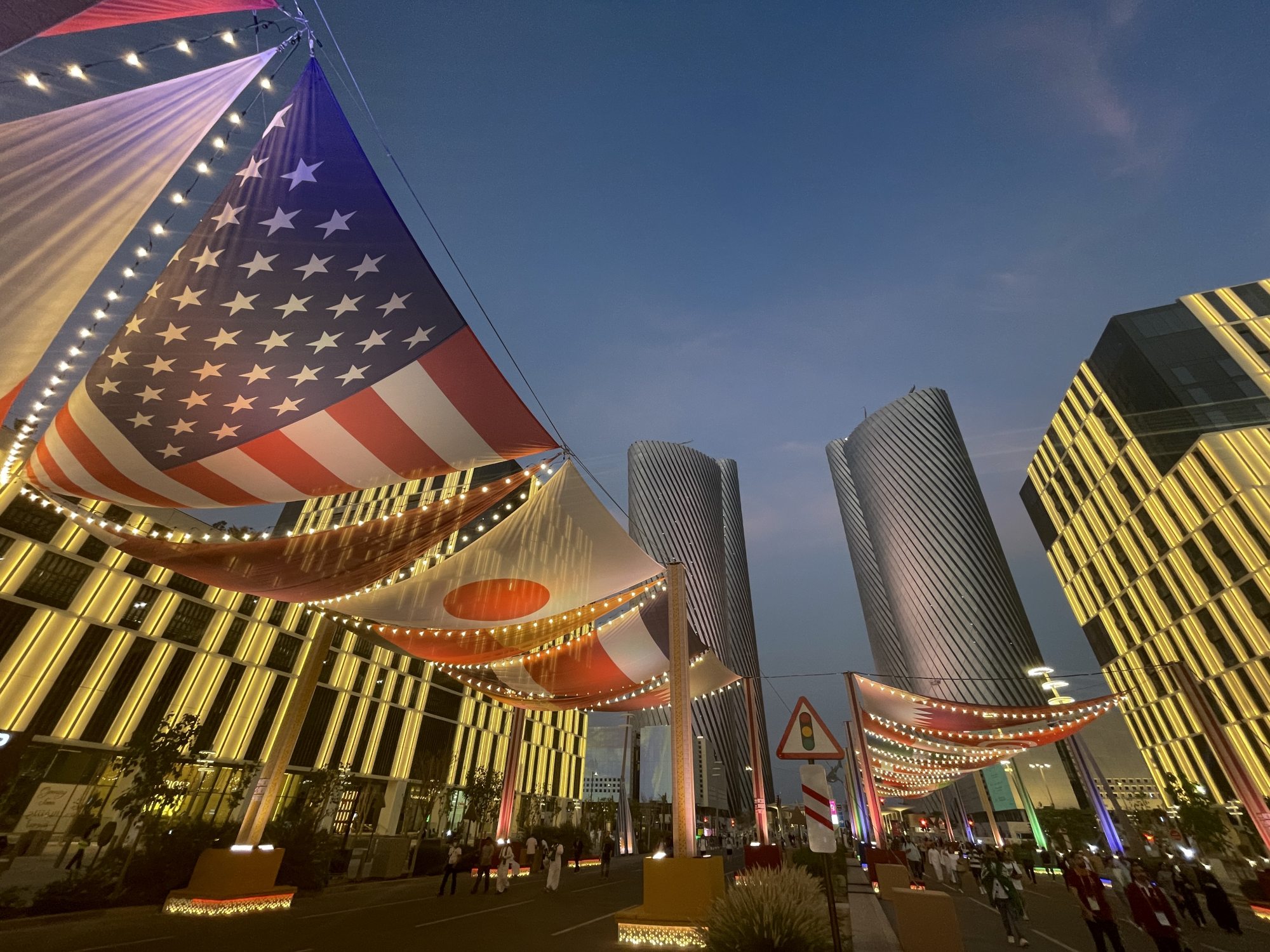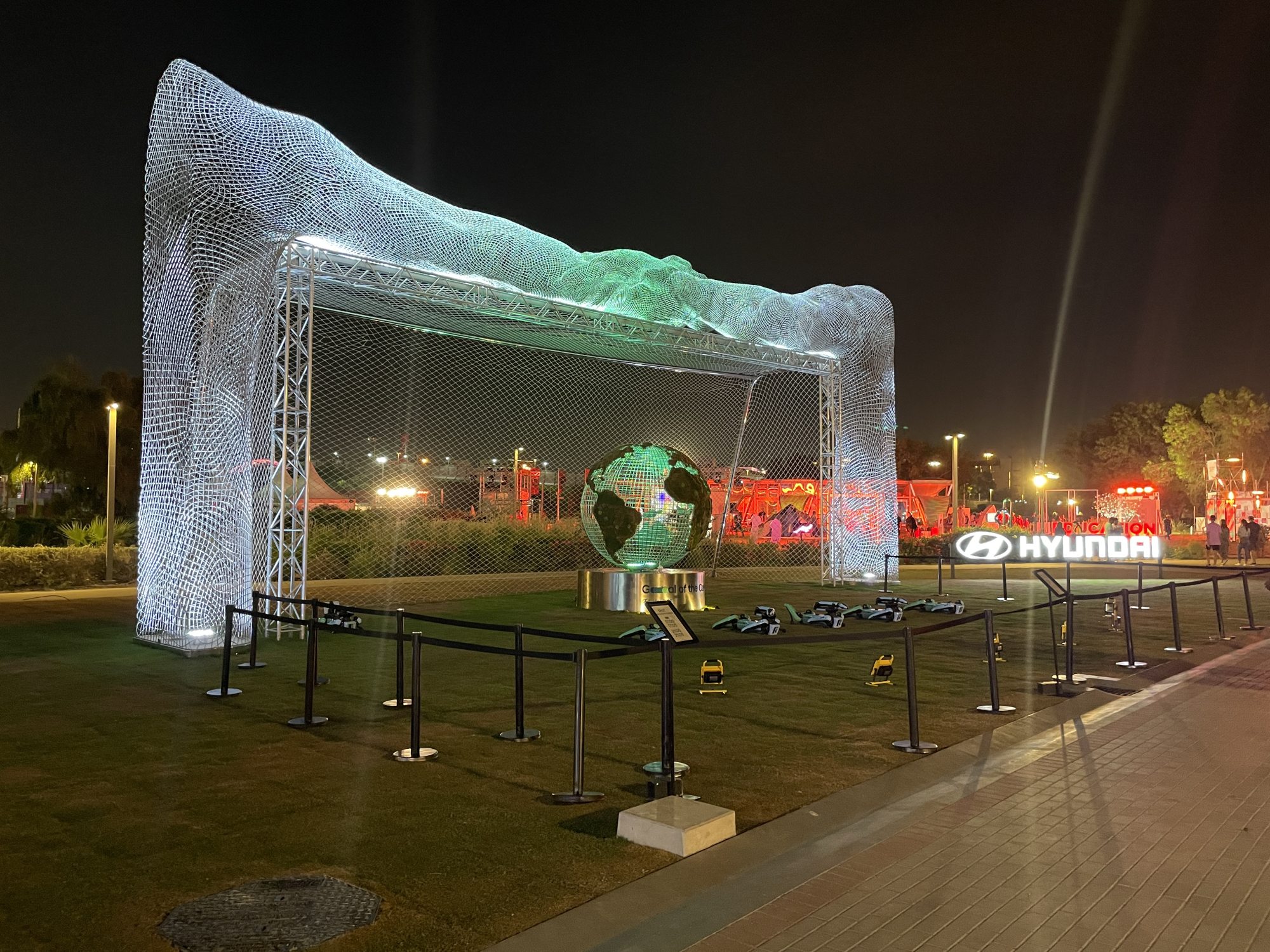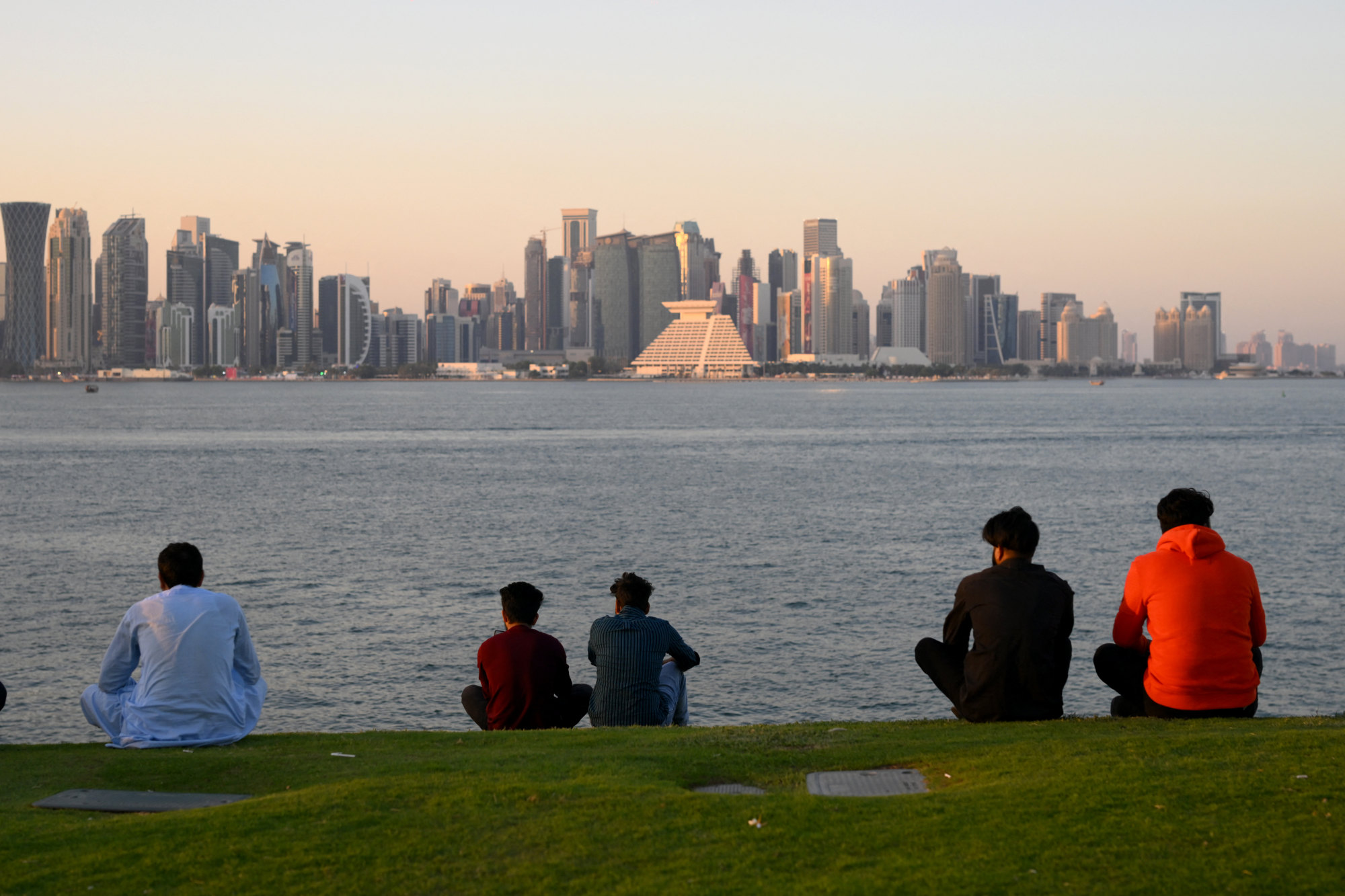
Qatar’s Olympics-style World Cup may not be ‘carbon-neutral’, as Fifa claims. But what to do to make future tournaments sustainable?
- Fifa’s claim the Qatar World Cup is carbon-neutral has come under fire; critics say stadium construction and inbound air travel make for big carbon footprint
- Qatar’s one-city World Cup does minimise domestic travel, but an expert says scaling down stadia and reducing foreign visitors is the way to become eco-friendly
Souk Waqif in Doha, Qatar, is a colourful place even when there aren’t thousands of football fans jostling to occupy its antiques shops, restaurants and shisha lounges.
In the late afternoon sun, the mud-brick facades of the marketplace glow orange as the sweet smells of tobacco and molasses mingle with delicate perfumes and the smell of grilled lamb.
The market’s main thoroughfare leads into the ultra-modern Msheireb district, where, during the group stages of the football World Cup, the digital bell of a yellow electric tram chimes as the vehicle approaches a group of Iranian football fans exhaling loudly through tuneless vuvuzelas.
These emissions are welcome in Qatar, but Fifa says it’s focused on reducing the more insidious kind at this tournament, perhaps establishing a blueprint for more sustainable future World Cups in the process.

Net-zero carbon dioxide emissions will be achieved, Fifa claims, with the purchase of carbon credits in renewable energy projects in Turkey and Serbia.
Japanese fans cleaning World Cup stadiums an example for Hong Kong people
However, that doesn’t add up for Gilles Dufrasne, policy officer at carbon emission watchdog Carbon Market Watch, which has examined Fifa’s accounting of emissions.
“Fifa says it’s purchased carbon credits that generate extra emission reductions that would not have happened without the finance, but it’s sending money to projects that don’t need it. The finance has no impact on the decision of the project to go ahead or not so it’s not generating extra reductions.”
Besides, guidance from the recent United Nations Climate Change Conference’s High-Level Expert Group states that offsets should not be used when trying to reduce emissions and that events that take money or support from fossil fuel companies cannot claim carbon neutrality.

“[This World Cup] is sponsored by Qatar Energy and funded primarily by government dollars that emanated from oil,” says Dr Madeleine Orr of The Sport Ecology Group, who is writing a book on sport and climate change.
Business media company Forbes estimates that the event has cost Qatar US$220 billion. Part of that bill covers the construction of stadiums, the largest of which is in Lusail, a new “smart city” 29km (18 miles) north of Doha.
The carbon footprint of the six permanent stadiums built from scratch for the tournament is estimated by Fifa to be 200,000 tonnes of CO2.

“We estimate that it’s more like 1.6 million tonnes,” says Dufrasne. “They took the assumption that the stadiums are going to exist for 60 years so are only taking responsibility for the two months the World Cup is going on.”
Nevertheless, this World Cup has introduced some innovative ideas around the concept of sustainability. One venue, the “demountable” Stadium 974, was built with 974 shipping containers. It will be dismantled after the World Cup and, it is claimed, sent somewhere it’s needed.
“The idea of having a stadium that can be disassembled, transported, reassembled and reused somewhere else is definitely an interesting concept, but it depends on how the stadium continues to be used and how far it will be transported,” says Dufrasne. That remains to be seen.

Of the 616 fleet vehicles sponsor Hyundai has provided for the tournament, 226 are hybrid electric or battery electric models, while 10 electric buses have been made available to the media. The use of electric vehicles is a first for a World Cup.
In the huge Fan Festival zone, on Doha’s Corniche promenade, Fifa and Hyundai have built a small museum from rammed earth, packed with mementos including the World Cup trophy itself. The museum will be returned to nature after the tournament.
Outside the museum is an attention-grabbing sustainability metaphor. Titled The Greatest Goal, the permanent artwork is a huge goalpost featuring two outstretched hands holding each other as part of the crossbar.

“I crafted the intricately woven steel mesh entirely out of recycled stainless steel and the net is woven with recycled linen by Qatari fishermen,” says Italian sculptor Lorenzo Quinn, a member of Team Century, Hyundai’s World Cup sustainability ambassadors.
These efforts could easily be dismissed as greenwashing (deceptively using imagery and unsubstantiated claims to give the appearance of being eco-friendly), but that an electric-car maker is promoting sustainability in a Gulf state shouldn’t be underestimated.
“Ten years ago, sustainability and sustainable innovation were not discussed in the Gulf region and it’s still very much taboo due to its close ties to oil,” says Orr.

“There are some interesting initiatives around ground transport and green construction coming together for the World Cup, but it’s tinkering around the edges of the main contributors to the carbon footprint.”
No discussion about a World Cup and sustainability can be had without reference to travel, both to the event and between venues.
“Everyone I have spoken to says they have enjoyed the compactness of this World Cup,” says Matt Slater, senior football news reporter for sports news outlet The Athletic UK. All eight venues being used are in or close to Doha, the furthest distance between stadiums being 55km.

“They have liked not having to move about a big country, they have gone to multiple games and although beer has been expensive they have saved money on travel.”
Their in-country carbon footprints have been modest, too. Doha’s metro and bus system have been free for all fans, while taxis and Uber cars are cheap. The latter are simple to arrange thanks to every fan having been given a free local 5G SIM card.
Fifa has reported that fans from Saudi Arabia – which shares a land border with Qatar – and India top the list of countries whose citizens have applied for Hayya cards, special visas for those attending World Cup matches, however, many of the around 1.2 million football visitors have flown much further and Fifa has estimated that travel will account for 51.7 per cent of the World Cup’s carbon footprint.

The 2026 World Cup finals will be expanded to include 48 competing countries and be hosted by 16 cities across the United States, Canada and Mexico, all using existing stadiums. However, fans will probably take many flights between host cities.
Qatar World Cup 2022: who has the best, worst and most controversial kit?
So what does Fifa need to do to create a sustainable World Cup?
“[It] will need to shift away from a tourism-dominant model to a more locally focused one,” argues Orr. “Prioritise hosts with existing venues, scale down to 15,000-20,000 seat stadiums and reduce the number of international fans.”
Although Qatar’s one-city World Cup has some practical advantages for visitors, it’s likely to remain an expensive anomaly both financially and environmentally.

“I think the Qatar World Cup is a one-off.”

